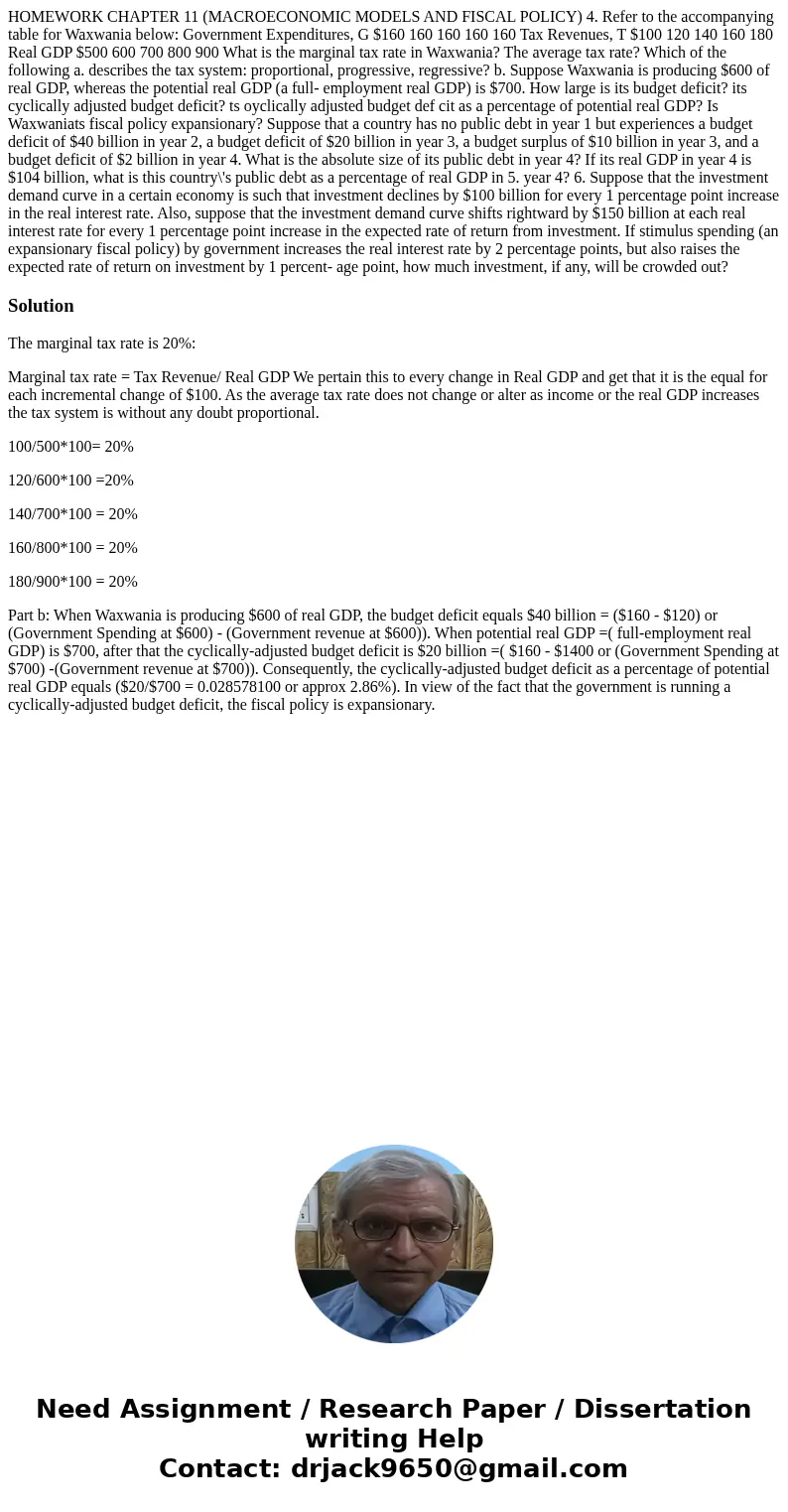HOMEWORK CHAPTER 11 (MACROECONOMIC MODELS AND FISCAL POLICY) 4. Refer to the accompanying table for Waxwania below: Government Expenditures, G $160 160 160 160 160 Tax Revenues, T $100 120 140 160 180 Real GDP $500 600 700 800 900 What is the marginal tax rate in Waxwania? The average tax rate? Which of the following a. describes the tax system: proportional, progressive, regressive? b. Suppose Waxwania is producing $600 of real GDP, whereas the potential real GDP (a full- employment real GDP) is $700. How large is its budget deficit? its cyclically adjusted budget deficit? ts oyclically adjusted budget def cit as a percentage of potential real GDP? Is Waxwaniats fiscal policy expansionary? Suppose that a country has no public debt in year 1 but experiences a budget deficit of $40 billion in year 2, a budget deficit of $20 billion in year 3, a budget surplus of $10 billion in year 3, and a budget deficit of $2 billion in year 4. What is the absolute size of its public debt in year 4? If its real GDP in year 4 is $104 billion, what is this country\'s public debt as a percentage of real GDP in 5. year 4? 6. Suppose that the investment demand curve in a certain economy is such that investment declines by $100 billion for every 1 percentage point increase in the real interest rate. Also, suppose that the investment demand curve shifts rightward by $150 billion at each real interest rate for every 1 percentage point increase in the expected rate of return from investment. If stimulus spending (an expansionary fiscal policy) by government increases the real interest rate by 2 percentage points, but also raises the expected rate of return on investment by 1 percent- age point, how much investment, if any, will be crowded out?
The marginal tax rate is 20%:
Marginal tax rate = Tax Revenue/ Real GDP We pertain this to every change in Real GDP and get that it is the equal for each incremental change of $100. As the average tax rate does not change or alter as income or the real GDP increases the tax system is without any doubt proportional.
100/500*100= 20%
120/600*100 =20%
140/700*100 = 20%
160/800*100 = 20%
180/900*100 = 20%
Part b: When Waxwania is producing $600 of real GDP, the budget deficit equals $40 billion = ($160 - $120) or (Government Spending at $600) - (Government revenue at $600)). When potential real GDP =( full-employment real GDP) is $700, after that the cyclically-adjusted budget deficit is $20 billion =( $160 - $1400 or (Government Spending at $700) -(Government revenue at $700)). Consequently, the cyclically-adjusted budget deficit as a percentage of potential real GDP equals ($20/$700 = 0.028578100 or approx 2.86%). In view of the fact that the government is running a cyclically-adjusted budget deficit, the fiscal policy is expansionary.

 Homework Sourse
Homework Sourse